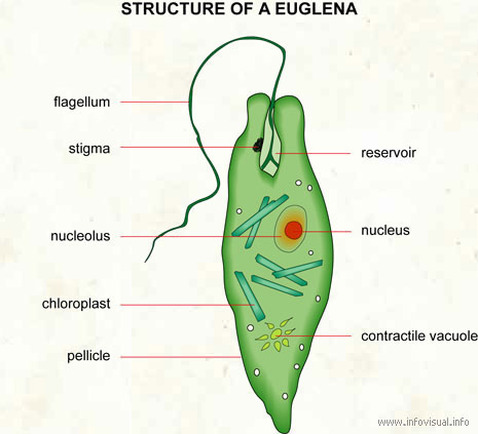Euglena undergo asexual reproduction by binary fission. Reproduction by binary fission involves the process of mitosis, in which the organelles are duplicated and the two sets separate to from two identical daughter cells. Although Euglena contain some characteristics of animals, no sexual reproduction has ever been recorded.
image source: http://micro.cornell.edu/sites/micro.cornell.edu/files/shared/images/binary_fission.jpg




